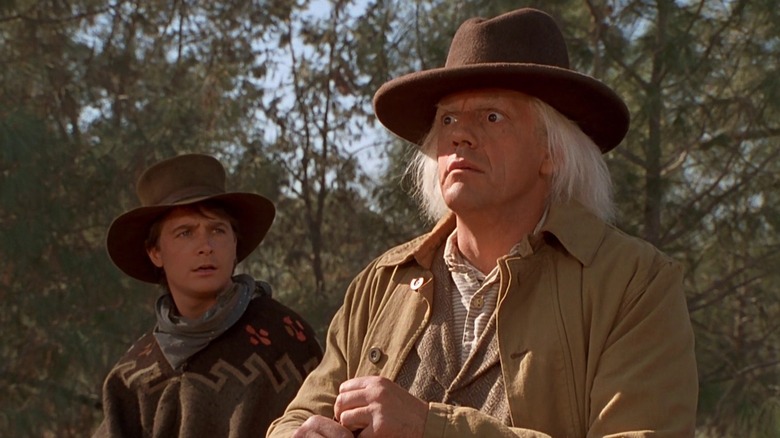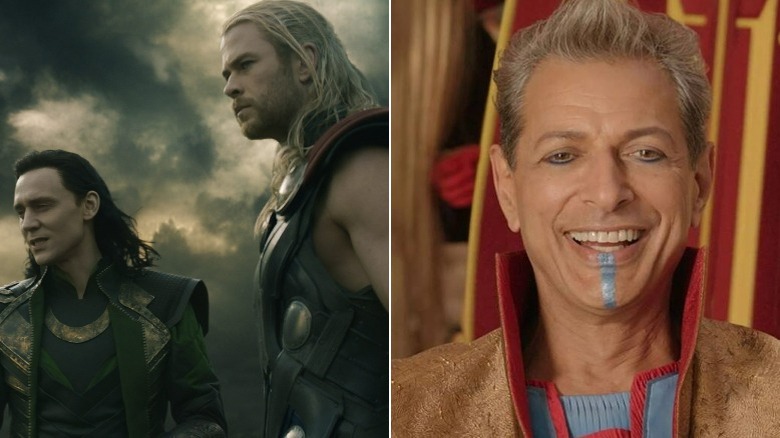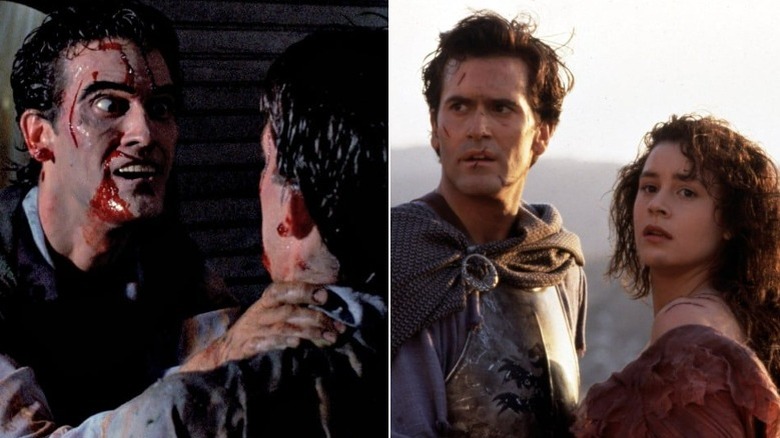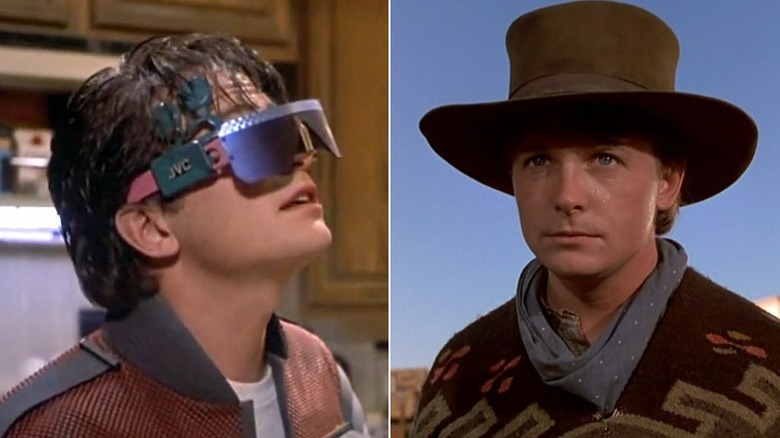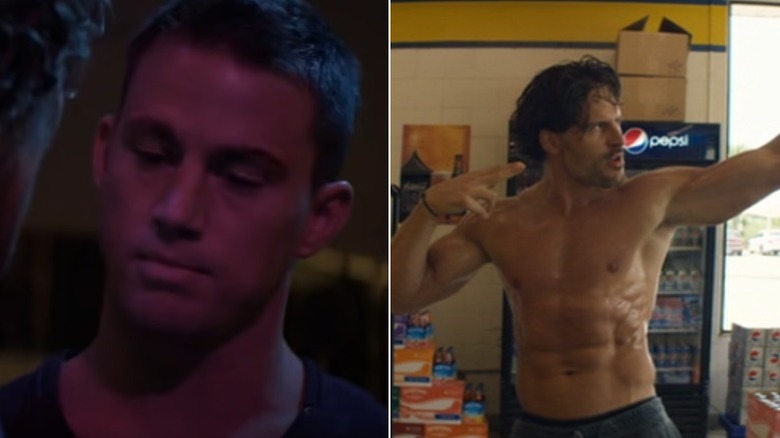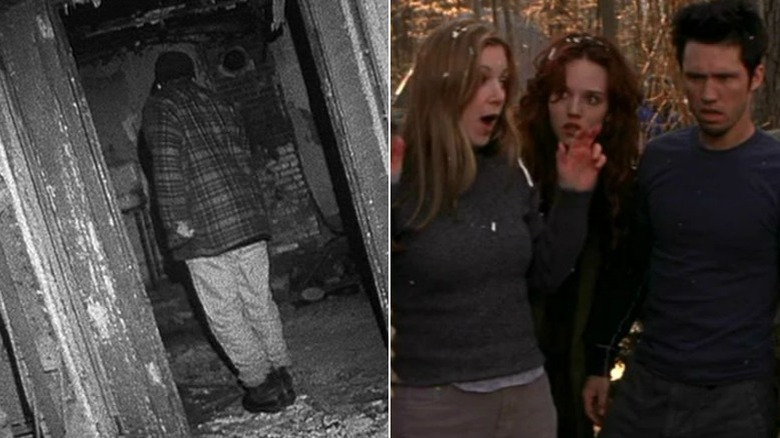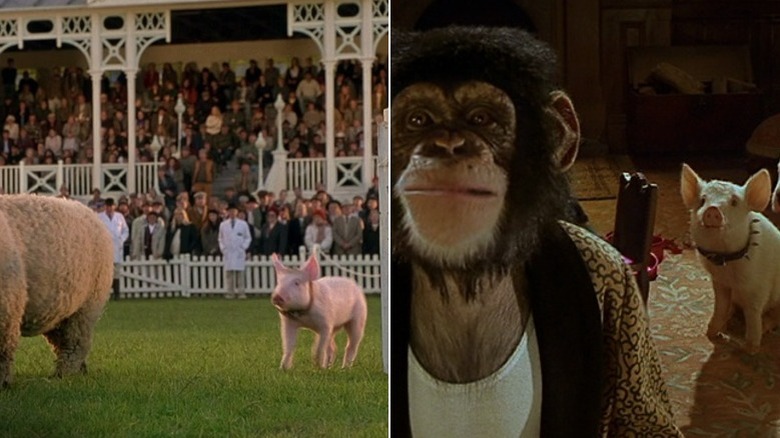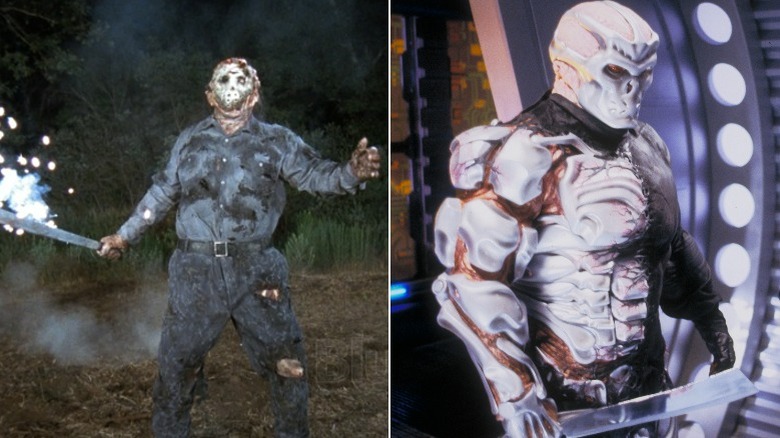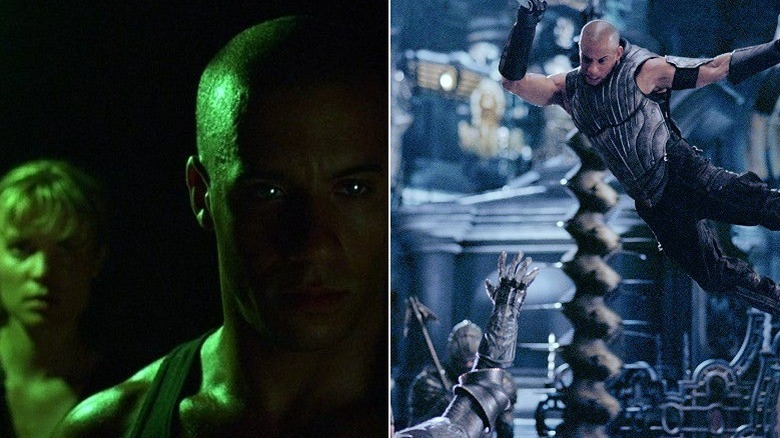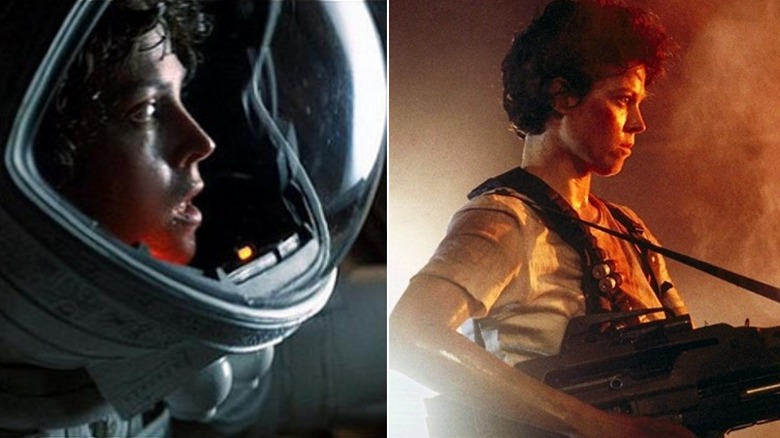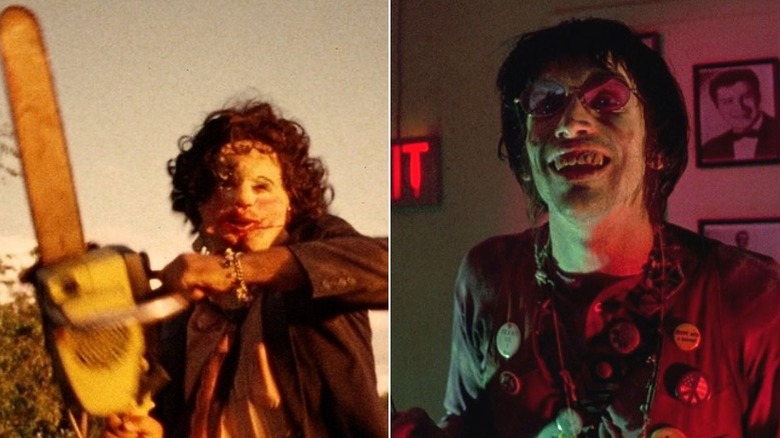Movie Sequels That Are A Completely Different Genre Than The Previous Entry
The most common approach to movie sequels — or sequels in any medium, really — is to give fans more of what they loved from the previous installment. This tactic often results in a superior film, which makes sense given that sequels have the benefit of knowing what did and didn't work from the last entry and being constructed accordingly. The biggest issue with this approach presents itself by way of a sequel that is a little too similar to a previous entry, though more of a good thing isn't always a bad thing.
However, there are plenty of sequels that go in the complete opposite direction. Of all the ways this can be accomplished, among the least utilized is when a sequel is actually a different genre than the movie it is following up. It's certainly difficult to accuse a sequel of being a clone of its predecessor when the two aren't even the same type of movie. Sometimes this decision is done to help rescue a struggling franchise, while other times it's simply the result of a filmmaker and or a studio feeling ambitious enough to shake up the creative status quo of a series that had been doing just fine.
Whatever the reason, there's no denying that it's fascinating to see back-to-back entries within movie franchises find themselves in completely different aisles of the video store — or in different categories on Netflix, if you prefer a less ancient point of reference.
Thor: Ragnarok
While the Marvel Cinematic Universe gets a lot of flak for all of its movies feeling too similar, there is actually a fair bit of genre variety among the MCU films. In fact, even individual series within the overall MCU experiment a bit with this, such as "Captain America: The First Avenger" essentially being a war movie and then giving way to a spy thriller in its sequel, "The Winter Soldier."
But no sub-franchise within the MCU gave fans a bigger case of tonal whiplash than the transition between "Thor: The Dark World" and "Thor: Ragnarok." Considered by many as one of the worst MCU films, "The Dark World" is dour and gritty to a fault, failing to capitalize on the charm and charisma that Thor (Chris Hemsworth) and Loki (Tom Hiddleston) used to help make the tough sell of a Thor solo film series work in the first place.
So when it came time for the third Thor movie, the MCU followed the lead of "Guardians of the Galaxy" and "Ant-Man" and made an all-out superhero action comedy. It proved to be the right direction for both the character and his solo films, as the fourth installment, "Love & Thunder" also wisely kept things flashy and funny.
Army of Darkness
You'd be incredibly hard-pressed to find a sequel pairing more similar to one another than "Evil Dead" and "Evil Dead II." The two films have so much in common that many articles have been written and discussions have been had about whether "Evil Dead II" is a sequel at all, or if it's actually a remake of the original. Star Bruce Campbell, in trademark Bruce Campbell fashion, has hilariously settled the debate by proclaiming "Evil Dead II" a "requel."
There's a long, complicated story about rights issues and studio requests that form the foundation of why the first two "Evil Dead" films have so many similarities, and intertwined with that story is the fact that writer and director Sam Raimi wanted to make the movie that became "Army of Darkness" after "Evil Dead." So he actually intended right off the bat to follow up his small-scale comedy horror movie in a secluded cabin in the dark woods with an epic medieval action splatterfest against an entire army of Deadites.
Instead, he made two "Evil Dead" moves in much the same style, which made the left turn into "Army of Darkness" all the more jarring. Although, part of its genius is that, while not technically a traditional horror film, "Army of Darkness" is actually the perfect gateway movie by which newcomers can ease into the horror genre.
Back to the Future Part III
The first two installments of the "Back to the Future" series bounced back and forth between the past of 1955 and the far-off future of 2015 – with those two years being chosen because they were exactly 30 years before and after the release of the original movie. With "Back to the Future Part III," that three-decade swing in either direction wasn't good enough as Marty and Doc traveled a full century back to 1885.
And with that, a sci-fi trilogy was capped off with a surprisingly old-fashioned Wild West romp. Truth be told, it was largely only the second "Back to the Future" entry that trafficked heavily in sci-fi, with the first movie mostly being a fish-out-of-water story where Marty tries to fit in in 1955. But because "Back to the Future Part II" took place mostly in the future and doubled down on the sci-fi genre trappings, it was all the more of a shock when it was followed up with "Part III."
Honestly, if you just look at the entire middle section of "Part III," there is relatively little to tie it back to the sci-fi roots of the series as a whole, with it instead being largely about paying homage to — and also poking a little fun at — classic Hollywood Westerns while only occasionally reminding the audience that this is still supposed to be a time travel film.
Cars 2
At the time of its release, "Cars" was Pixar's worst-reviewed movie by a considerable margin. While all six previous films had scored a 92% or higher on Rotten Tomatoes, "Cars" could only manage 75%. It was then followed up by the incredible run of "Ratatouille," "WALL-E," "Up," and "Toy Story 3" — only for "Cars 2" to then become Pixar's first and thus far only movie to receive a Rotten score.
That being said, "Cars" still proved extremely popular, especially in terms of merchandising. But clearly, Pixar was aware that it wasn't their strongest film, which might be why the studio took a fairly standard sports film and gave it a literal spy movie for a sequel. And director John Lasseter wanted to make sure that people knew it wasn't meant to be some genre spoof, either.
He told IGN, "It's not a parody of a spy movie. It is a spy movie." Trying to make a legitimate, non-parody spy movie where the people are cars and one of the leads is played by Larry the Cable Guy was definitely ... a choice. The response to the movie, and the fact that "Cars 3" took things back to the race track, speaks for itself in how successful "Cars 2" was in its risky and unusual genre change.
Rambo: First Blood Part II
Sylvester Stallone's John Rambo has represented the kind of over-the-top action movie machismo made popular in the 1980s for so long, that it's easy to forget how very different Rambo was in his big screen debut. Though technically an action film with plenty of thrilling set pieces, 1982's "First Blood" is also largely a character drama about a Vietnam vet and his struggles with PTSD and other war-related trauma. Initially depicted as a quiet man who is minding his own business and isn't interested in starting trouble, Rambo inadvertently runs afoul of a cruel small-town sheriff (Brian Dennehy) who teases and torments Rambo until his inner demons are sufficiently summoned — causing him to act out in violent fashion.
This is a far cry from the John Rambo we see in the sequel, "Rambo: First Blood Part II," where all complexity and nuance have been dropped in favor of a shirtless, sweaty, hulking action hero who basically spends the movie's entire runtime spraying bullets from a machine gun that seems more suited to be mounted on a tank rather than held in one's hands. The only hyphenated descriptors that can be added to "action" in terms of the genre of "First Blood Part II" are things like "over-the-top" and "extreme." A character-driven drama, it is not, nor have any of the subsequent movies in the "Rambo" series been.
Magic Mike XXL
It isn't often that an eye candy-based movie is made for a target demographic other than straight males. So when something like "Magic Mike" comes along, it's a big deal for that reason alone. Loosely based on the real-life experience of star Channing Tatum, "Magic Mike" tells the story of the titular character (Tatum), an up-and-coming male exotic dancer who has to learn the ropes of the industry from veteran dancer, Dallas (Matthew McConaughey).
While there are funny moments and a certain amount of self-aware camp, "Magic Mike" largely takes itself seriously and features plenty of dark plot points and a huge dose of melodrama. As its silly title might suggest, the sequel, "Magic Mike XXL," leans heavily into humor and has a lot more fun with itself and its characters. But that's not the only place where it differs from its predecessor, as "XXL" is basically a road trip comedy as opposed to the original being more of an underdog story-workplace melodramedy. There is even a fair amount of physical comedy to be found in "XXL," proving that there is more to do with the actors' bodies than simply putting them on display.
Book of Shadows: Blair Witch 2
"The Blair Witch Project" was best experienced by those who were caught up in the movie's initial marketing strategy. Things were deliberately kept vague and mysterious, never explicitly claiming that the footage and the people were real but also never outright saying they were actors in a work of fiction either. At a time before such things could be easily debunked online and millions of people could immediately spoil the surprise on social media, the strategy was extremely effective in making the pioneering found footage horror movie even more terrifying than it already was.
Due to the massive success of the extremely low-budget film, the studio fast-tracked a sequel and didn't bother to wait until the original filmmakers were ready to make one. So a different creative team was brought in for "Book of Shadows: Blair Witch 2," who had the admittedly interesting idea of making a movie in which a group of fans of the original "Blair Witch Project" decide to visit the town where the movie was filmed, talk to the locals about the movie, and visit the places where it was shot. However, the resulting movie basically just ended up being exactly the type of cookie-cutter big-budget teen horror flick that "Blair Witch Project" was such a refreshing change of pace from, simply leaning into genre tropes rather than deconstructing them in any way.
Babe: Pig in the City
It's always a surprise anytime we are reminded that George Miller of "Mad Max" fame also has a side of him that loves making adorable family movies featuring talking animals. In addition to writing and directing the two "Happy Feet" movies which are animated films about dancing penguins, Miller also co-wrote and co-produced 1995's award-winning "Babe." Considered one of the best family movies of all time, "Babe" is about as cute and heartwarming as movies get, telling the story of the titular pig who thinks he has what it takes to be a sheepdog.
However, Miller didn't direct the first "Babe" movie. When he did get behind the director's chair for the follow-up, "Babe: Pig in the City," that's where he really let his mad genius shine through. Just how different are the two films? Empire Online perhaps summed it up best in their review with the line, "Where Babe brought deep-rooted joy, the sequel brings fidgety depression," while Decider classified it as "a harrowing immigrant drama disguised as a children's movie."
Indeed, "Pig in the City" is surreal, surprisingly dark, and at times, a totally unhinged adventure that is seemingly only connected to the original by way of its star — but certainly not in genre, vibe, or tone. This is more what one would expect a kids' movie in the hands of the director of "Mad Max: Fury Road" to look and feel like.
Jason X
It's difficult to pin down when the trope started taking an existing IP and trying to spice it up by sending it to outer space. But one thing's for sure: It had already landed firmly on the side of being a worn-out cliché long before someone had the lazy idea of doing that to the "Friday the 13th" franchise and its star villain – Jason Vorhees – for 2002's "Jason X." And considering he was already done being Space Jason for 2003's "Freddy vs. Jason," it's clear that the bizarre and extremely misguided attempt to reinvent the series as sci-fi horror didn't take.
In all fairness, "Friday the 13th" had already been floundering by the time "Jason Goes to Hell: The Final Friday" was released. And even that movie was criticized for straying too far from the original point of the series by leaning a little too much on the supernatural elements of the character and his mythos. But at least "Jason Goes to Hell" was still a classic slasher movie at its heart, and it's not like Jason hadn't already been something of a magical character for most of his existence. Taking the dark, menacing Jason with his dirty, ripped clothes and hockey mask and giving him bulked-up robotic armor, and putting him on a brightly-lit space station couldn't have been further from the previous installments — nor further from what fans, or anyone else for that matter, wanted.
The Chronicles of Riddick
When Vin Diesel could still be classified as a "rising star," his first great leading role that wasn't just voicework was 2000's "Pitch Black." In it, Diesel starred as a man named Richard B. Riddick, who starts the movie as a villain but quickly becomes a reluctant anti-hero as he is the only one who knows how to survive the dangerous aliens on the planet he and the fellow passengers of a prison ship crash-landed on. Though it has obvious sci-fi elements, it's largely an action horror film and an extremely effective one at that, doing a lot with a relatively meager budget — for a major studio film, anyway.
Diesel and "Pitch Black" co-writer and director, David Twohy, had big plans for the Riddick character and was eager to turn it into Hollywood's next huge franchise. They continued down that road four years later with "The Chronicles of Riddick," which took the Riddick character, completely abandoned all horror elements of the original movie, and dropped him into a big-budget planet-hopping sci-fi action and adventure epic.
Though it did spawn an excellent video game called "Escape from Butcher Bay," the movie's ambition at being the starting point of the next "Star Wars"-level mega-franchise didn't come anywhere close to panning out. In fact, when the third film finally came out nearly a decade later, simply titled "Riddick," was a clear attempt to return to the more stripped-down, horror-focused roots of the first movie.
Aliens
In a lot of ways, the genre drift that happened between "Alien" and "Aliens" is not only the most famous example of a mid-franchise genre change, but it's the blueprint for how to do it properly. People have spent the last 30-plus years debating which of the two movies is superior, and whether James Cameron was correct in reinventing Ridley Scott's space horror masterpiece as one of the biggest action movie spectacles of the 1980s or if it tainted the franchise.
Either way, it's hard to argue that each film is a masterclass of how to do its respective genre right. "Alien" continues to be the measuring stick by which any horror movie about a mostly unseen terror stalking and slowly picking off the rest of the characters is judged. And "Aliens" remains one of the all-time great action movies featuring one of the all-time great action heroes in Sigourney Weaver's Ellen Ripley.
Actually, the genre change makes perfect sense in this case, arguably more so than any other genre change in Hollywood history. You have a movie where a woman has to hide from a deadly alien who has killed everyone on her ship but her, and then she comes back for satisfyingly violent revenge in the sequel. It's such a perfect arc that it's no wonder the "Alien" franchise has struggled so much in trying to follow up on these two classics and will probably never fully succeed in doing so.
The Texas Chainsaw Massacre 2
What do you do when you've directed one of the most influential movies of all time and one that more or less created the entire slasher genre? If you're Tobe Hooper, you wait 12 years after the release of "The Texas Chainsaw Massacre" to do a sequel. Only, rather than follow up on the extremely disturbing, and masterfully-placed horror masterpiece that was the first movie, you make a sequel that basically parodies the very genre that you helped to create.
From the theatrical release poster for "The Texas Chainsaw Massacre 2" – which was deliberately made to look like the artwork for "The Breakfast Club" — it was obvious that something was unusual about this movie. Sure enough, "Massacre 2" was a campy black comedy that poked fun not only at itself and its predecessor but the genre as a whole. It also did a complete 180 from the original – noted for a lot of its most gruesome moments either happening off screen or not being especially gory — and being as over-the-top bloody and violent as possible.
"Massacre 2" was received mostly poorly upon release, though it has since been reappraised and is now considered a cult classic by those who have been able to better appreciate what Hooper was trying to accomplish in retrospect. The franchise and the character of Leatherface have continued on through the 2020s via more sequels and several subsequent reboots and spin-offs, but "Massacre 2" is the last installment that Hooper would write or direct.
